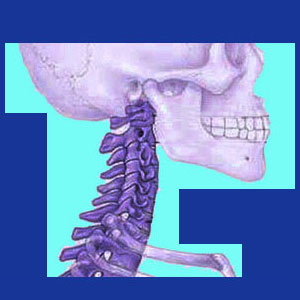
Cervical lordosis can mean one of two distinct things for neck pain sufferers. The first meaning describes the normal curvature inherent to a typical human neck, which is lordotic in nature. The second meaning can mean an abnormal condition in which the usual curvature of the neck has been altered in one direction or the other. In essence, all meanings of lordosis deal with the front-to-back curvature of the neck, but some denote a normal curve, while other uses denote an atypical curve.
Can this be any more confusing for patients? Well, probably. Let’s learn more. This resource section investigates typical and atypical front-to-back curvatures in the cervical spine and their potential consequences. If you always wanted to understand the form and function of the front-to back spinal curvatures, this is the perfect article for you.
Cervical Lordosis Facts
The neck is usually curved in a lordotic fashion, meaning the open end of the curve faces the rear of the body. This cervical curve, just like all the other usual spinal curves, is designed to absorb shock and carry weight. A straight spine will never be as strong or as shock absorbing as a multiply curved one, which is why our anatomy features alternating lordotic and kyphotic curves at every level, from cervical to thoracic to lumbar to sacral/coccygeal.
When the curvature in the neck is decreased the condition is said to be hypolordotic. When the curvature in the neck is exaggerated, then the condition is said to be hyperlordotic.
Spinal Lordosis Discussions
Here are some of the independent detailed articles we have prepared to help you understand the nature of lordosis in the spine and how it may be related to a neck pain condition:
Cervical kyphosis describes a completely abnormal curvature in which the curve is actually reversed in direction and now the open end of the curve faces front. This condition is also known as a reversal of cervical lordosis and usually only affects a few vertebral levels.
Loss of cervical spinal lordosis is a common diagnostic term used on imaging reports, such as cervical MRIs. Other names for this condition include both military neck and straight neck syndrome.
Cervical Spinal Lordosis Summary
We always get a tremendous number of questions regarding the notation of a loss of lordosis in the neck. It seems this particular diagnostic conclusion is seldom explained to affected patients. In a few cases, there may be structural reasons for this change in spinal curvature to take place. In most patients, the lordosis is not permanently altered, but simply transitionally affected by the pull of muscular spasms.
When we see this latter explanation in the neck, we usually think regional ischemia as the root cause right away, since this is the main driving force behind all manner of back and neck muscle spasms. In most circumstances, a loss of lordosis, or an exaggerated lordosis, does not mean pain is imminent. In a few cases, however, this may well be the actual source of pain in some unfortunate patients. It can be difficult to really understand the normal and atypical degrees of lordosis in the human spine. Therefore, we suggest additional research on lordosis at Cure-Back-Pain.Org, the world’s leading chronic pain education and advocacy web resource.





